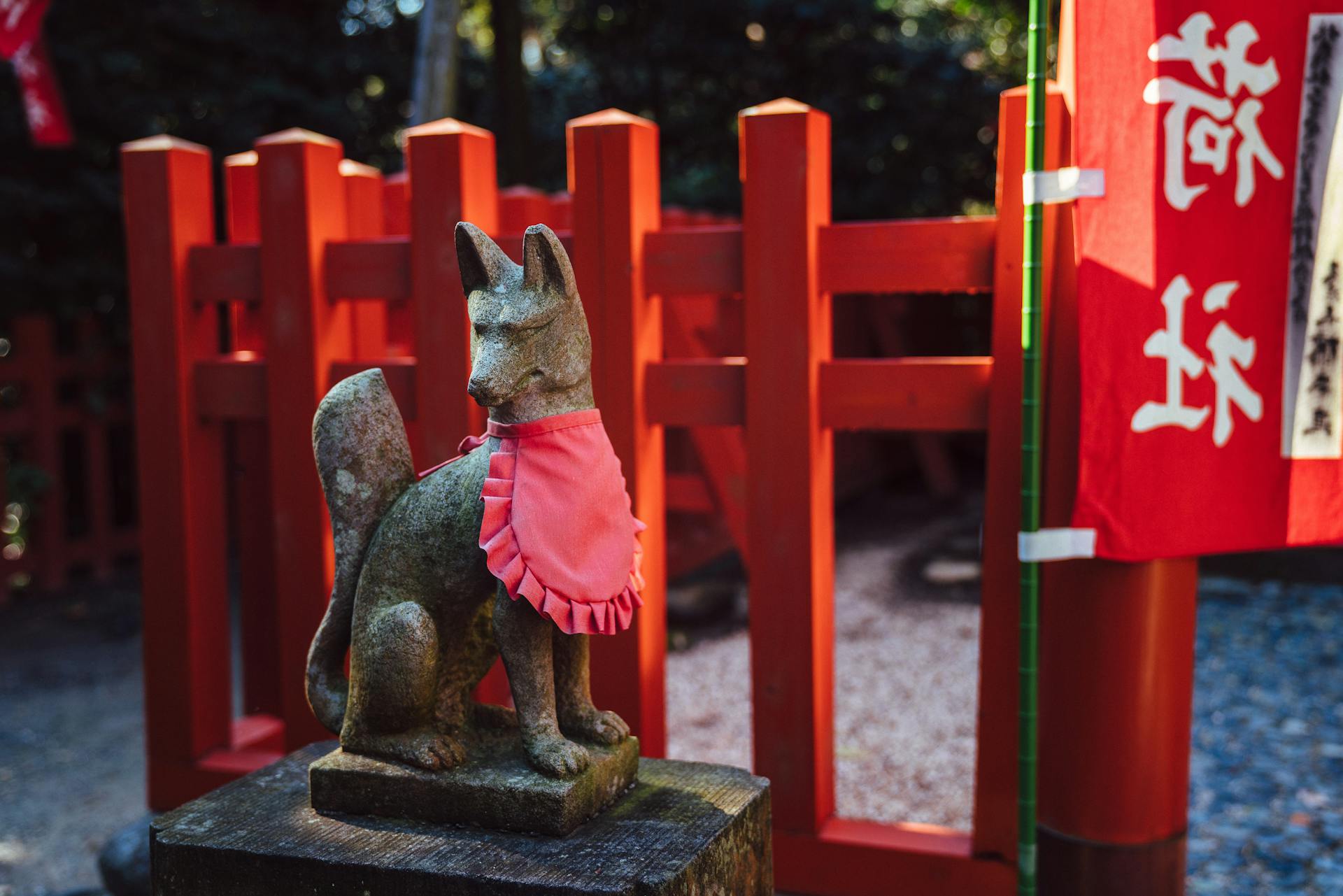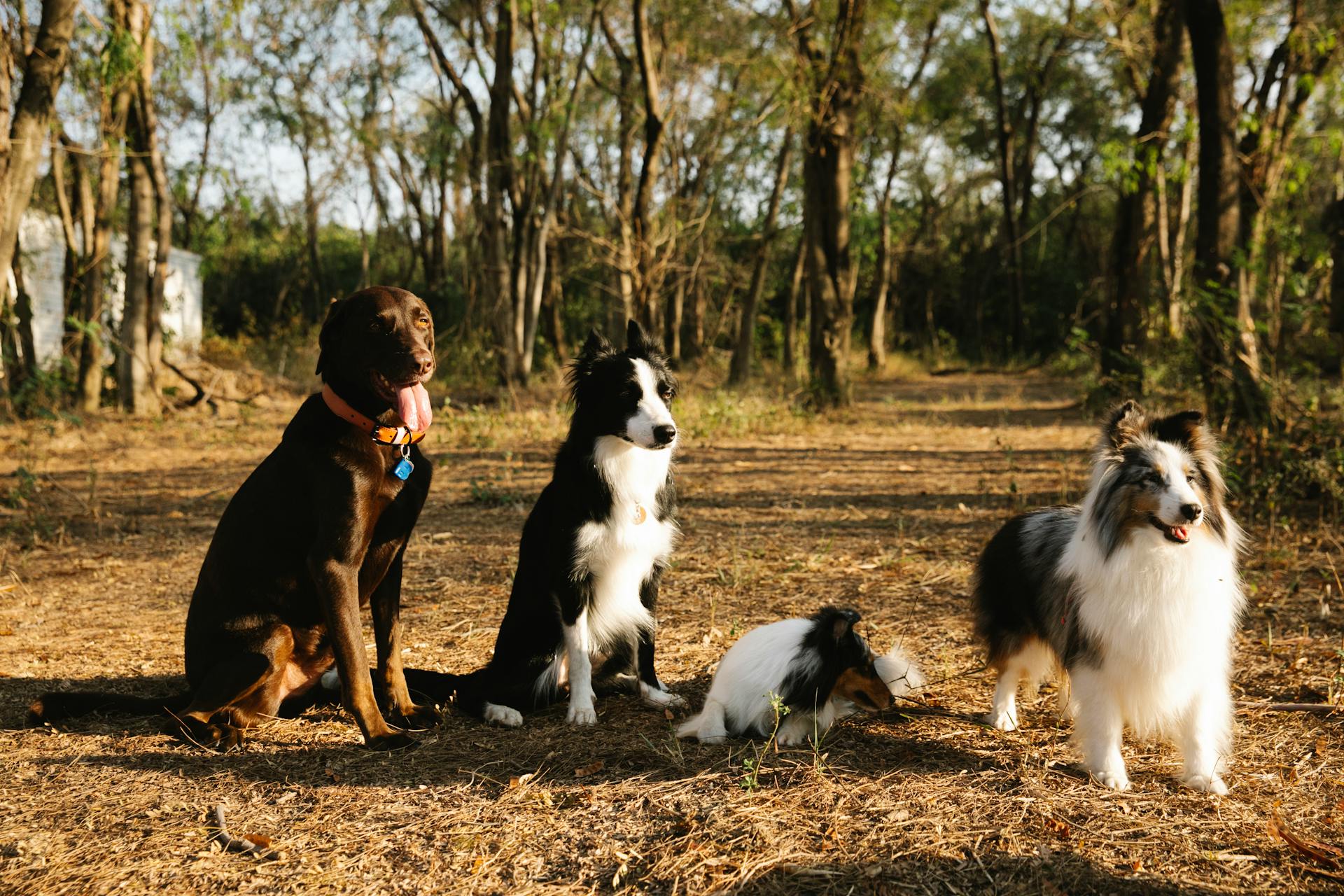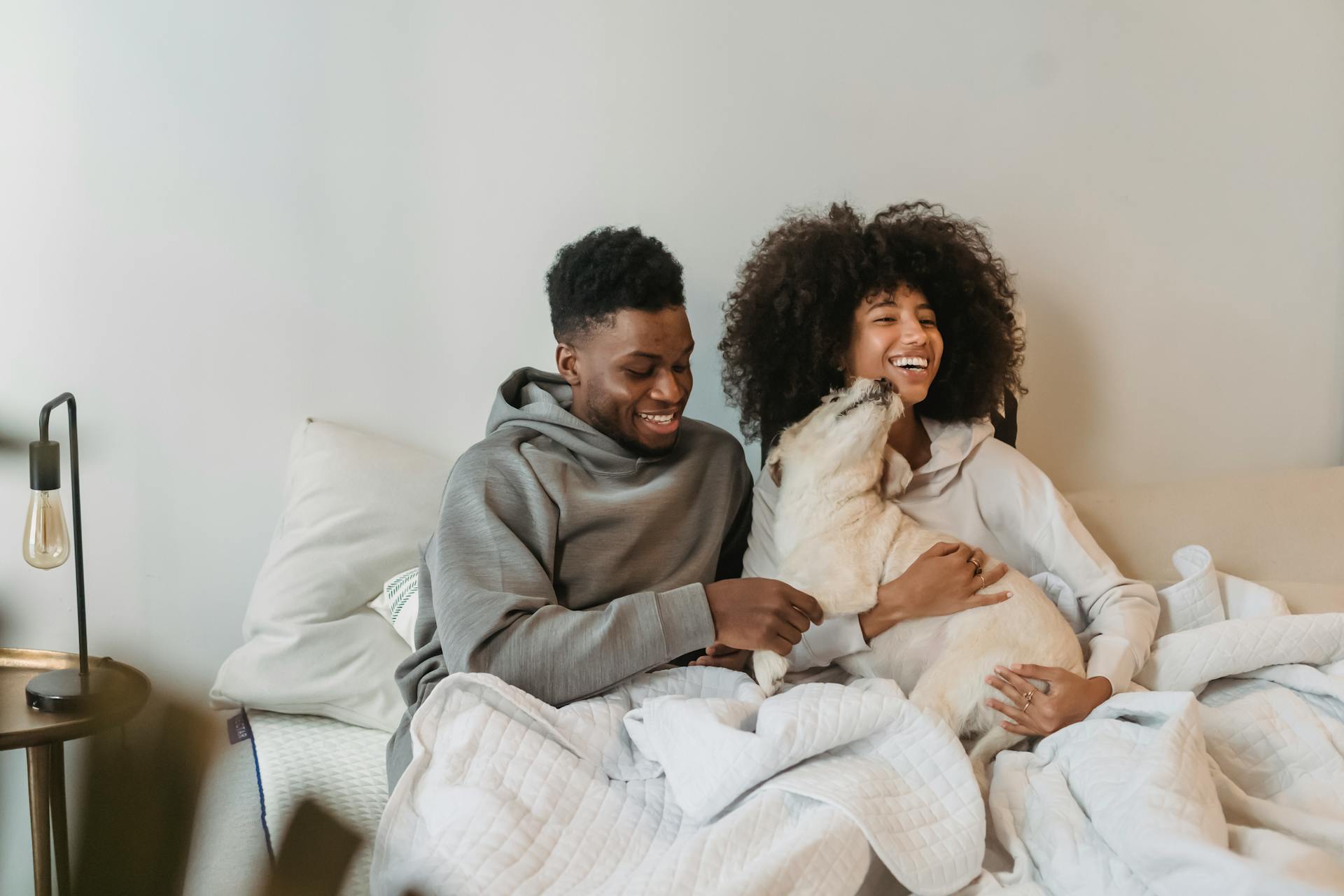
The Hachiko Statue is a beloved landmark in Tokyo, Japan, and its story is truly inspiring. Hachiko waited for his owner to return home for nine years after his owner's passing.
Located in front of Shibuya Station, the statue is a symbol of loyalty and devotion. It's a must-visit spot for anyone traveling to Tokyo.
The statue was unveiled in 1934, but it was rebuilt in 1948 after being destroyed during World War II.
A different take: Hachiko the True Story of a Loyal Dog
The Story of Hachiko
Hachiko was adopted by Professor Eizaburo Ueno in Akita prefecture in the early 1920s.
The two were inseparable, with Hachiko accompanying his master to Shibuya Station each day when the professor would head off to work at Tokyo's Imperial University.
Hachiko would come back to the station each afternoon at 3pm to greet Ueno upon his return. This daily routine continued for years.
Professor Ueno died in 1925 while at the university, and Hachiko continued to visit the station daily until his own death nearly 10 years later.
Hachiko's loyalty became a legend, and a small statue was erected in front of Shibuya Station to commemorate him.
The statue is now a typical starting point for anyone visiting Shibuya, and a convenient meeting point for friends and occasionally tour groups.
Here's an interesting read: Hachiko Dog Statue Location
Hachiko's Legacy
Hachi's legacy is a testament to the enduring power of loyalty and devotion. His story inspired a bronze statue, 162 centimeters high, built outside the Shibuya Station entrance in 1934.
People from far and wide were moved by Hachi's tale, and a funeral was held for him on March 12, 1935, after he passed away at the age of 13. His remains were interred alongside the grave of Professor Ueno in Aoyama Cemetery.
The statue's unveiling on April 21, 1934, was a significant event, with Hachi even in attendance. His pelt was preserved and mounted, and is displayed at the National Science Museum of Japan in Ueno, Tokyo.
A gravestone still stands alongside that of Professor Ueno in Aoyama Cemetery, a lasting tribute to Hachi's memory.
Suggestion: Ashkelon Dog Cemetery
Hachiko's American Connection
The film Hachi: A Dog's Tale starring Richard Gere brought Hachiko's story to the masses worldwide in 2009.
This film, however, was set in the US, which detracts from its cultural significance.
You're better off watching the original 1987 film, Hachiko Monogatari, to get a more authentic feel for Hachiko's life and times.
Akita to Tokyo

Hachikō was born in Ōdate, Akita Prefecture, some 600 kilometers from Shibuya.
The Akita-inu breed, to which Hachikō belonged, is a large dog with a gentle composure and thick, fluffy coat.
These dogs are considered loyal to their owner, attracting ardent fans worldwide.
The breed is said to have originated in the 1630s through cross-breeding of Matagi hunting dogs with local dogs to raise animals that were good at fighting.
A statue of Hachikō, the faithful hound, outside Shibuya Station is the most popular meeting spot in Japan, attracting many tourists too.
The hundredth anniversary of Hachikō's birth is being celebrated this year.
Hollywood Made Him American
Hollywood made Hachiko American in the 2009 film Hachi: A Dog’s Tale starring Richard Gere. This film brought the story to the masses around the world.
The film was set in the US, which detracts from its cultural significance.
Take a look at this: List of Fictional Dogs in Live-action Film
Tokyo Statues
There's a Hachiko Family Mural on the wall of Shibuya Station, opposite the original statue, where an artist dreamed up and sculpted a bit of canine company for the faithful dog.
A second statue of Hachiko was erected in front of Tower Records in Shibuya to commemorate the 20th anniversary of its relocation.
In 2015, another statue of Hachiko was dedicated in the grounds of the University of Tokyo, imagining a joyous reunion between the loyal Hachiko and his beloved owner Ueno.
The original Hachiko statue in front of Shibuya Station was sculpted in 1934 by Teru Ando.
Locals and tourists alike walk around the statue and take pictures, making it a landmark and famous destination for tourists.
There are over 80+ pictures and images of the Shibuya Hachiko statue available online, showcasing its popularity and iconic status.
The statue is often used as a meeting spot for people, especially those who met on a matching app.
In the evening, the statue is beautifully lit up, making it a popular spot for nighttime photos.
The Hachiko statue has become a beloved part of Tokyo's culture and is often referenced in popular culture, such as in the 2009 Hollywood movie Hachi: A Dog's Story starring Richard Gere.
For more insights, see: Dogs Body Language with Pictures
Frequently Asked Questions
How did Hachiko pass away?
Hachikō's death was caused by a combination of terminal cancer and a filaria infection. He also had four yakitori skewers in his stomach, but they did not contribute to his demise.
How many years did Hachiko wait?
Hachiko waited for 9 years and 9 months after the professor's passing. This remarkable loyalty lasted for 9 years, 9 months, and 15 days.
Is the Hachiko statue still there?
Yes, the Hachiko statue is still standing and remains a popular meeting spot in Tokyo. It was erected in August 1948 and is located near one of Shibuya Station's exits.
Where is the real Hachiko statue?
The real Hachiko statue is located outside the Hachikō exit of Shibuya Station in Tokyo, Japan. It's a small bronze statue honoring the loyal dog's unwavering dedication.
How many Hachiko statues are there?
There are 5 Hachiko statues in Japan, with the most famous one located in front of Shibuya Station in Tokyo.
Sources
- https://www.istockphoto.com/photos/shibuya-hachiko-statue
- https://planetyze.com/en/japan/tokyo/blog/hachiko-statue
- https://www.timeout.com/tokyo/news/10-things-you-didnt-know-about-hachiko-japans-most-loyal-dog-030821
- https://en.japantravel.com/tokyo/hachiko-statue-in-shibuya/44644
- https://www.nippon.com/en/japan-glances/jg00137/
Featured Images: pexels.com

